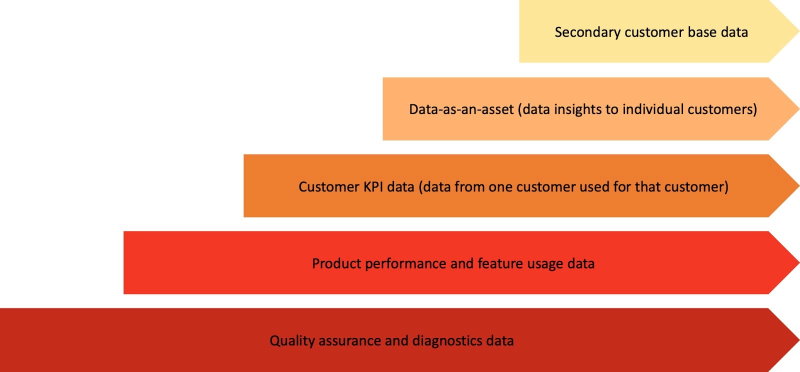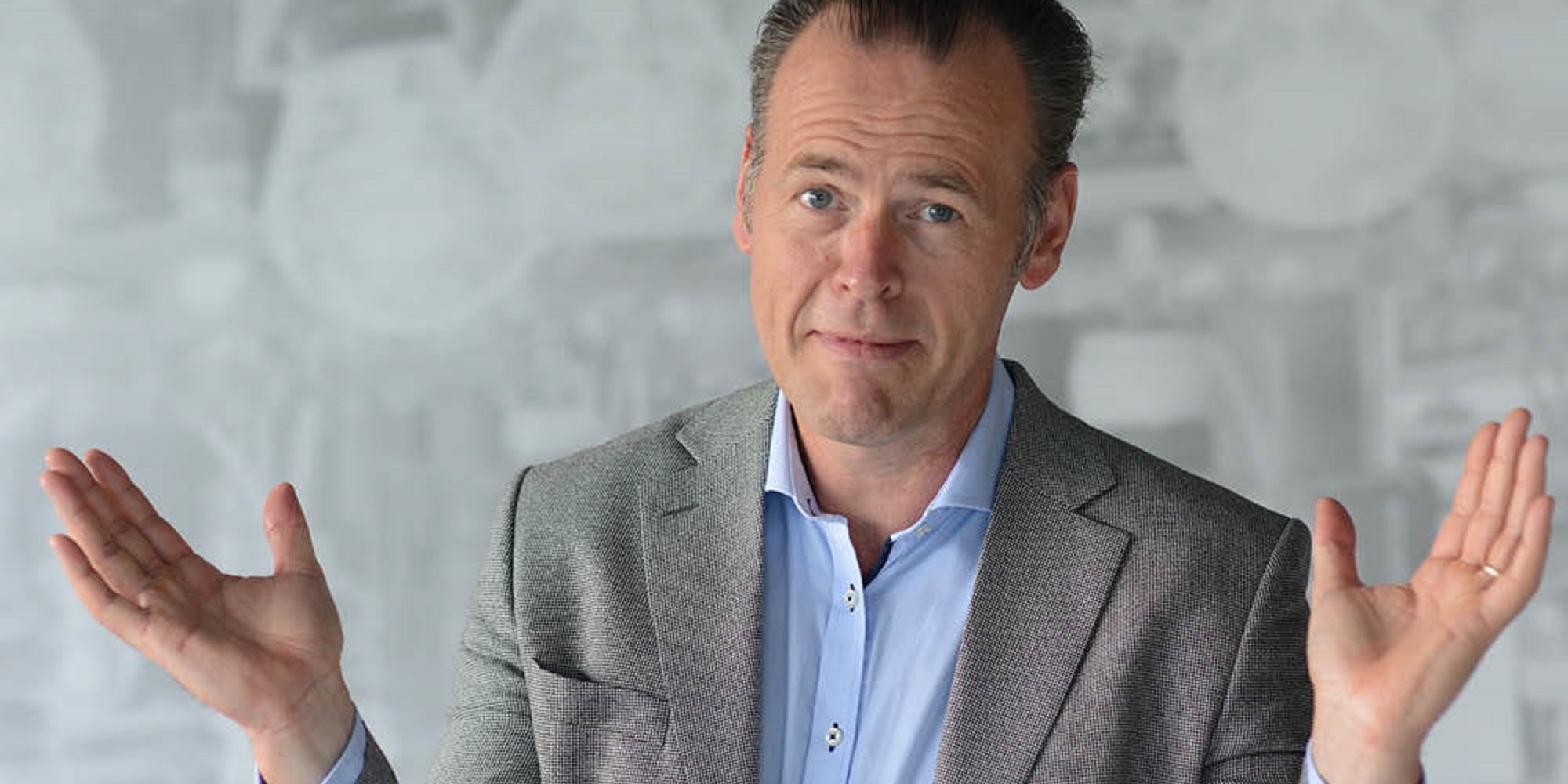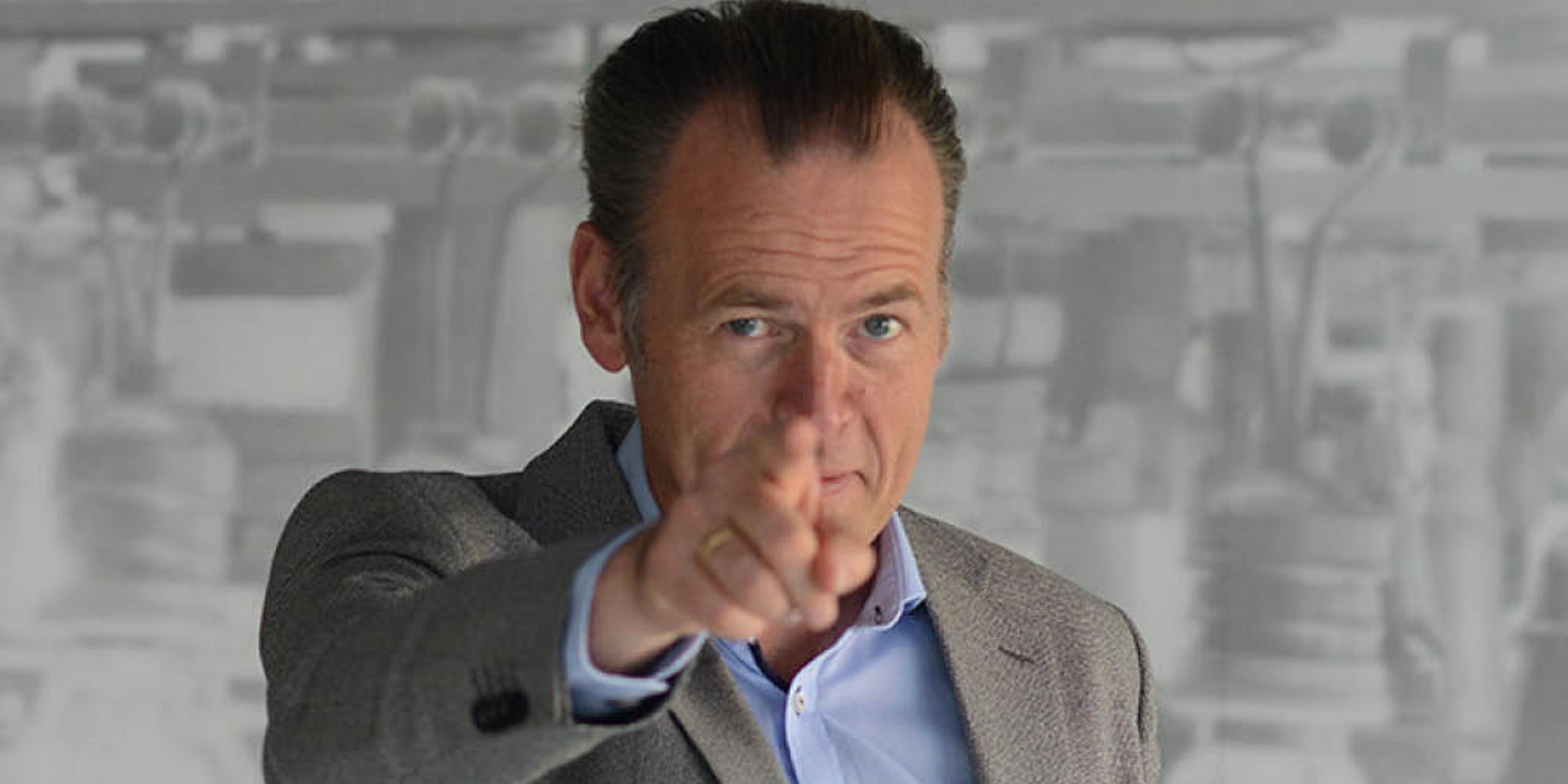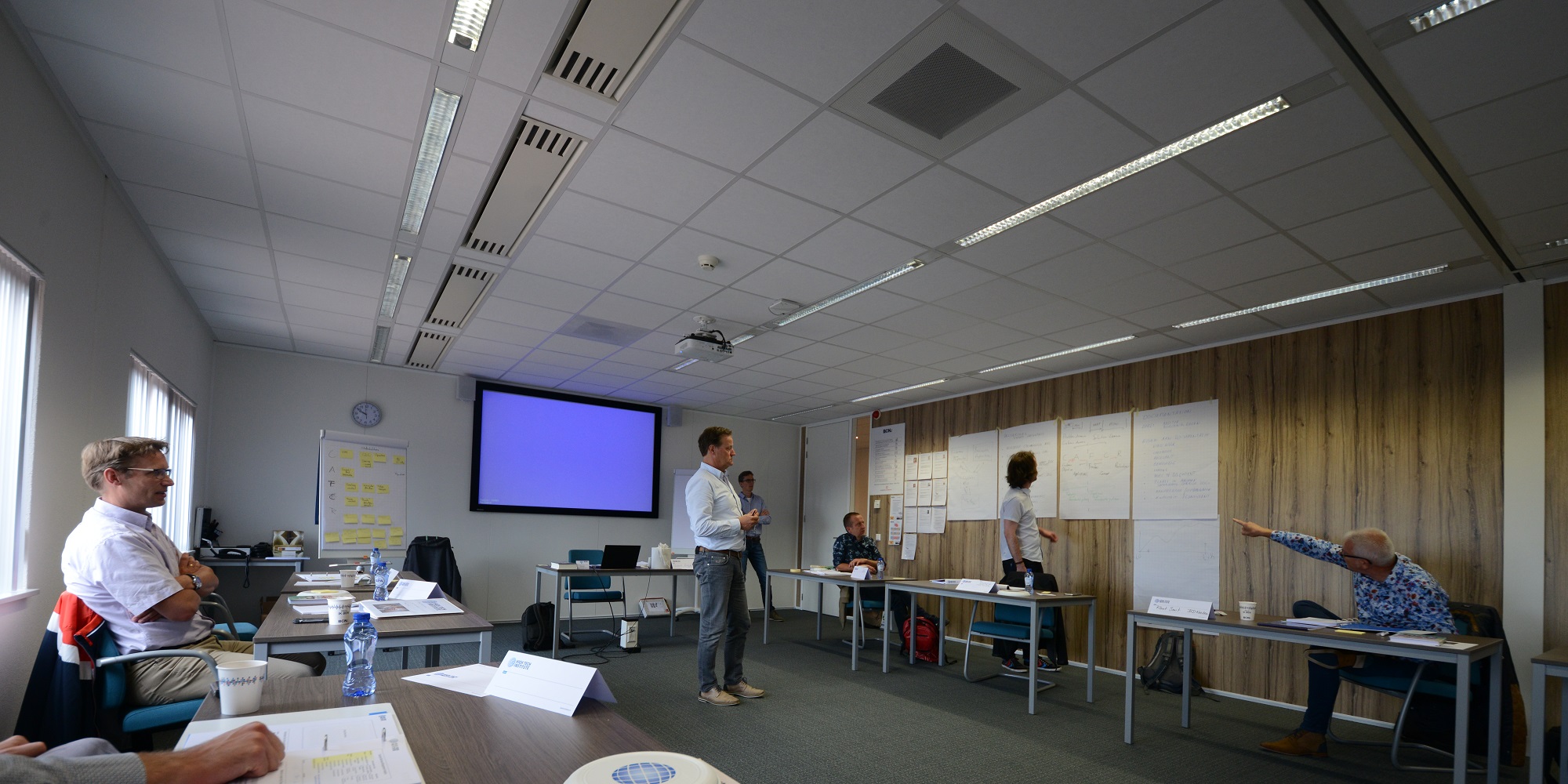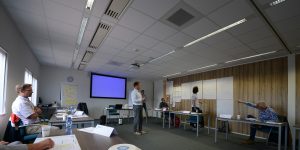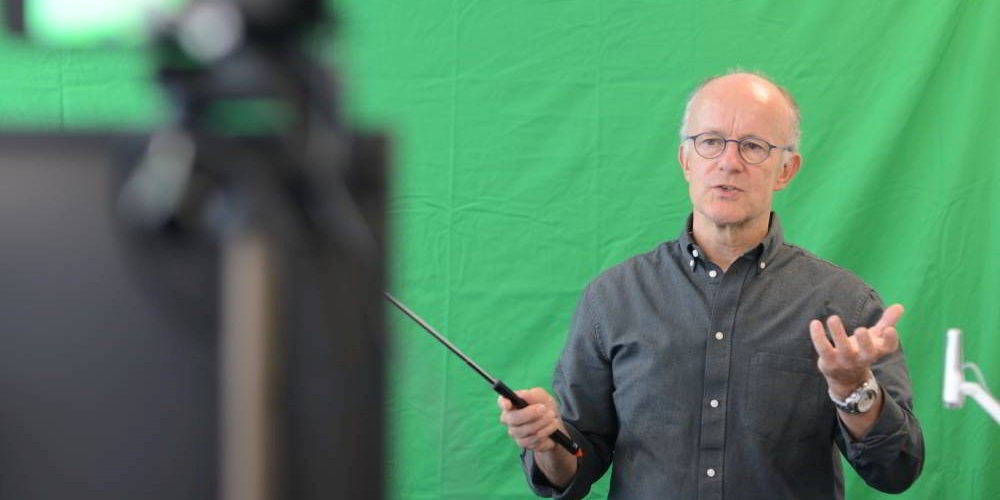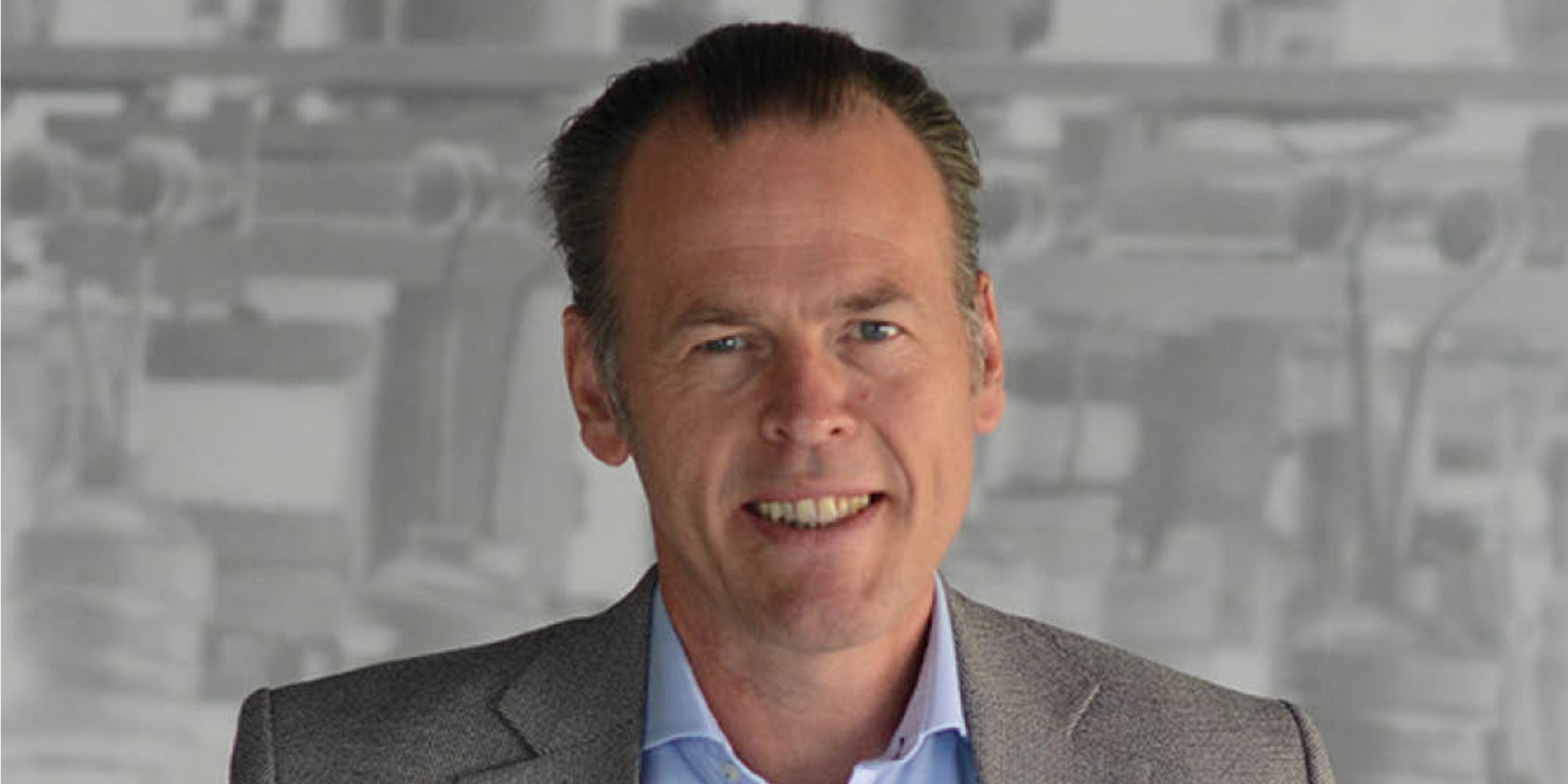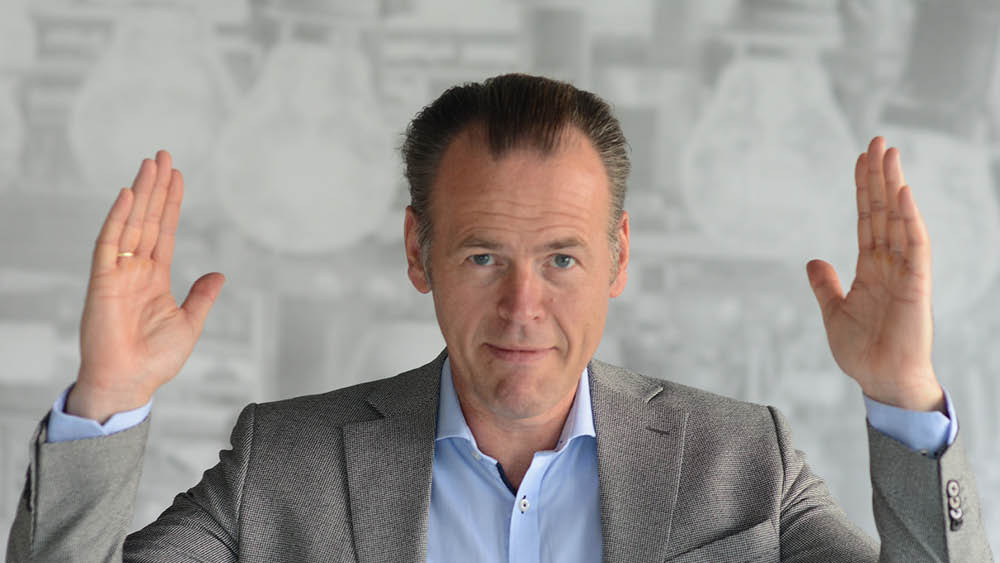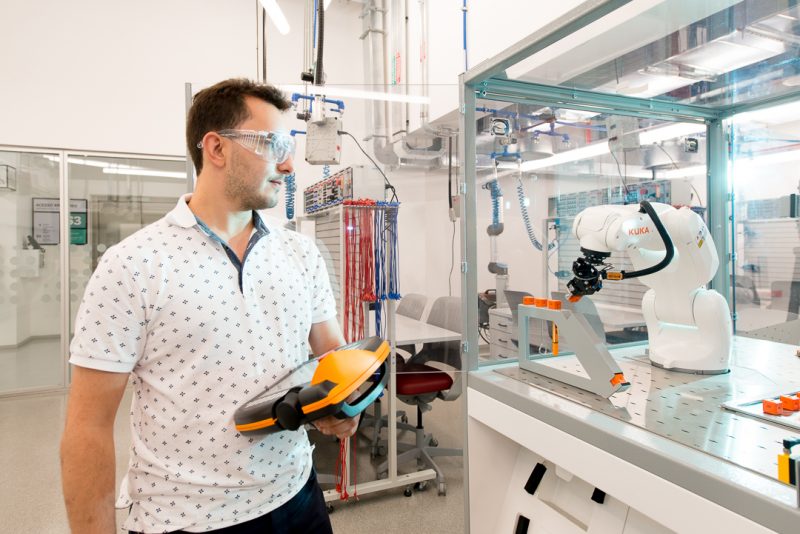Adrian Rankers and Hans Vermeulen had a sudden challenge when ASML Wilton insisted on providing the planned four-day Dynamics and Modeling training online. Rankers started working with green screen, Open Broadcaster Software, a camcorder, and document camera and after taking countless bumps and hard lessons learned, the training was successfully completed a month later.
In this article, Rankers of Mechatronics Academy and co-trainer Vermeulen share their experience on how to roll out a highly practice-oriented training course full of exercises online. They talk about the considerations, choices and tricky bumps, as well as about their experience with an ultimately very successful session of Dynamics and Modeling. They didn’t hold back their comments either.
Dynamics and Modeling revolves around the many aspects that influence the performance of mechatronic precision systems. In order to get that knowledge into your head, participants in the training should mainly work with exercises. One way this is achieved is by giving putting participants to work using the design tool 20-sim. “They do this in groups of two or three, with us looking over their shoulders,” says Hans Vermeulen, senior principal architect of EUV Optics System at ASML and part-time professor at TU Eindhoven. This need for intensive interaction between participants and trainers is a big reason why the training was never offered online before.
Last May, Dynamics and Modeling was scheduled for twenty ASML employees in Wilton, Connecticut. But when the first measures against corona came into force, travelling to the US was no longer possible for Rankers and Vermeulen. To guarantee the quality, they proposed to postpone the training until the autumn. However, the machine builder insisted: the technical experts in Wilton really felt the need to obtain the knowledge. That’s when the duo decided to wring the four-day course into an online format.
Better connection between ppt-slide and speaker
Coincidentally, Rankers had recently taken part in a conference that the American Society for Precision Engineering was forced to hold in Zoom. He was pleased with the design and quality. However, his trainer-senses also noted a disadvantage. “It was very tiring for me to look at a powerpoint with a moving mouse and a presenter that was only visible in a small window,” he says.
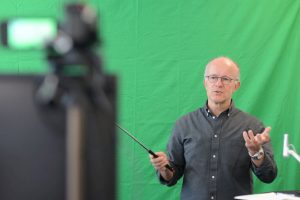
Adrian Rankers for a green screen during the Dynamics and Modeling training. Top left the camera for recording trainer and green screen, bottom right the document camera.
Reflecting on the upcoming course, Rankers realized that it is much more fun to watch a video stream where the teacher is visible from the waist up next to the presentation. “This creates a better relationship between the slide and the speaker explaining the information.”
Rankers looked around and saw three options to achieve this. It is possible to project a powerpoint on a wall and video stream the teacher plus projection with a camera. You can do the same with a large TV screen.
The third option was to put the instructor in front of a well-lit green screen, cut him loose using software and then mount him in the powerpoint presentation and share that stream via Zoom or Teams. Just like the weatherman on the NOS news, the trainer has to coordinate his instructions via his own screen.
Experimenting with green screen and OBS
Rankers decided to experiment with green screen and Open Broadcaster Software (OBS). He borrowed a large green tablecloth from a friend and hung it over a telescopic handle for garden tools. Photo shops already sell good green screen cloths for 30 euro. But because they were all sold out, instead it became a 4 by 6 meter cloth for 80 euros – also reasonably affordable.
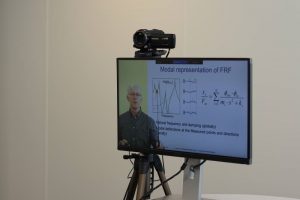
Through this screen Adrian Rankers coordinated his movements with the information on the powerpoint slides.
His first experiment with the tablecloth already worked “surprisingly well.” Rankers noticed that it was the exposure that counted. “If you go for Hollywood quality, seeing every hair of the presenter, it comes close. My wood and rope setup worked surprisingly well in sufficient daylight, especially when you consider that a lot of detail is lost in video streaming to the other side of the world anyway.” As a backup, he checked the available large-screen TVs in a nearby shop.
Because of the time difference, the training for ASML Wilton required afternoon and evening sessions, so Rankers also wanted to test the lighting conditions in the evening. “I figured this might be an issue,” he says. “From the information on the internet I concluded that evening shots were really different. Without good artificial light, the software doesn’t properly cut the person out of the green background.”
The nocturnal farewell drink at a distance at the end of an ASPE conference at MIT gave Rankers the opportunity to briefly test and experiment with it. Surprisingly, it turned out to work with the available artificial light in the space that Mechatronics Academy and High Tech Institute had set up at the Fellenoord location in Eindhoven. “I’ve had a lot of positive reactions and agreed with MIT pro Dave Trumper that I would share our first course experiences with him.”
Whiteboard and document camera
During their physical training Rankers and Vermeulen write a lot on a flipchart or whiteboard. Teams (which was chosen at the request of ASML) offers the possibility to write with the mouse, but that gave problems. In trials Rankers conducted in preparation with ASML Wilton, it was reported that participants could not use their whiteboard function. They also couldn’t share their own screen. The whiteboard problem was confirmed by Microsoft and appeared to be related to (GDPR) privacy rules.
That’s why Rankers on the trainer-side immediately sought refuge with a document camera. “A document camera is similar to a webcam on a tripod, which is aimed at a sheet of A4,” explains Rankers. “This can be easily autofocused on the paper at the touch of a button and then hold this setting. If you’re going to write, that’s fine. It’s not going to be disturbed by, say, autofocus on your hand.”
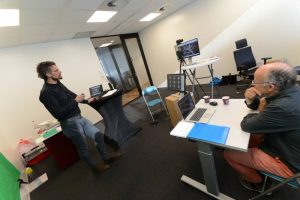
Both the trainer and his co-trainer have a screen on which you can see the image that is also presented to the participants.
Rankers and Vermeulen were both very satisfied with the document camera. “But switching between them is one of the minuses,” says Vermeulen. “In a physical training course, participants see everything side by side: powerpoint, whiteboard and trainer. Now they only saw our pen on the paper. If we switched to presentation, they’d have lost that image again.”
Rankers adds that entering an additional camera signal “still requires some dexterity” because of the switching between applications, presentations and the document camera. “That’s a bit more complicated because of the combi green screen and OBS,” he thinks. Especially switching to an application like 20-sim takes some practice. Operating the computer tool via a monitor a few meters away from you was not easy. As a double check, Rankers invited himself via private email so that he could see on his mobile phone at all times what the students had in view.
Data rate prioritized
A point of attention was the internet speed at High Tech Institute on location Fellenoord. This could be a potential bottleneck. The common throughput speed of all tenants together turned out to be only 100 Mb/s, while for a video stream 5 Mb/s is quickly needed. It turned out that the IT department wanted to give one IP address a higher priority for four days.
Rankers says, with a small sigh, that the people in Wilton, like his students at the TUE, only started installing 20-sim in the weekend before the training. “That didn’t go well because of the security of their ASML laptops,” says Rankers. The result was a lot of email communication just before the training and an escalation to the IT helpdesk to facilitate the final installations. “Next time, I’m really going to call everyone a week in advance and check on the preparation,” he laughs.
Rankers had made five short introductory videos for 20-sim and sent them in advance to teach the participants all the essentials of the tooling. In the future, he plans to add a video with the latest checks and send it well in advance. “So they know what we expect as basic knowledge.”
Interaction with the students
In the training setting Rankers and Vermeulen used a laptop with two external monitors. At an angle under the monitor with the constructed video image was also a second external monitor on which the Teams-meeting was shown.
In the training, in which everyone participated from home, most students unfortunately did not have a webcam. Rankers had also noticed that the connection would not work as well if everyone turned on their camera. That’s why they finally chose to only switch on the available webcams during the proposal round. “We didn’t see students, just the glowing balls with initials when questions were asked.”
Initially, Rankers asked the students to respond via the chat function and by raising their hands when they were in the picture. “Chat in itself worked well, but leaves little room for extensive discourse,” he says. “Hand-raising requires the presenter or his companion to be very alert, and that wasn’t always the case. In the end, after the first part of the day, we agreed that everyone would just interrupt and ask questions through their microphone. That worked well. There was a lot of interaction, but just like in an ordinary classroom, some stay quiet with a wait-and-see approach .” According to Rankers, there is still room for improvement. “Online, you could easily log the participation in order to more specifically encourage some people to participate.”
Practical exercises online
In the exercises, participants worked with teams that changed each day. Sometimes in pairs, sometimes in groups of four or five. In doing so, Rankers and invite Vermeulen to watch. Rankers: “There was good discussion within the groups, but there is still room for improvement in the guidance”. Vermeulen: “During an in-person training, you watch along and see immediately if the screen gets stuck. What we found is that online, participants didn’t speak up to let us know when it froze. It worked better with groups of four or five people than with couples,” describes Vermeulen. According to him, “Larger groups also work better online because there are always a number of people among them who are a bit more experienced and who pull the other along with them.”
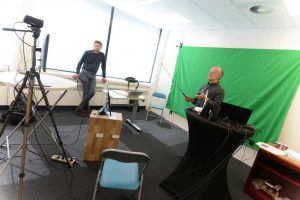
Online training with a co-trainer on standby was a pleasant experience for Rankers and Vermeulen.
Rankers and Vermeulen alternated every hour and a half. In addition, they noticed that training is pleasant when someone is on standby. “Presenting the whole thing takes some getting used to. It’s really nice with two people.” Rankers also has training sessions in which he uses a different teacher every part of the day. “Then you actually always need someone to instruct and deal with calamities.”
The duo was largely spared the latter. During the four days, Rankers and Vermeulen had to do a hard restart only once, because the system got stuck. In the end, Rankers concluded that they had completed a successful edition, “with a lot of ideas to do it even better and perhaps simpler.”
Four afternoons and evenings of Dynamics and Modeling are intensive for Vermeulen. In the evening around 11 p.m. at home, preparing course in the morning while his children also asked for attention now and then. “It’s second best,” he says when asked to choose between an on-site training and saving a tiring journey. “Being there live is by far my preference,” he says. “Especially with all the exercises. I can imagine that you can give a very good training online. We do that in college. But a lot of interaction requires physical presence. I think for one or two days of training I would opt for online, for four or five days, I would choose to take the penalty of flying six hours there and six hours back. For Asia, online training is difficult because of the time difference, unless both teachers and students make concessions. At our upcoming online design principles training for ITRI in Taiwan, shortly after the summer holidays, we will start extra early in the morning on our side and the students will continue in their time zone in the evening until 22.00 hours”.
The evaluation of the first online training Dynamics and Modeling showed very satisfied participants. Apart from the remark whether this intensive training might not have been better given in five days, the students were full of praise afterwards. Below is a selection of the category ‘general remarks’ from the evaluations:
- “Lecturers are very experienced and have vast knowledge on these topics. I find this training very useful and a nice summary on multiple topics. It is a pity that the training was online, I feel like in person training would benefit all and it would be even better than it was.”
- “At times there were technological challenges. I do wonder if Zoom would have worked better.”
- “Intensive content, but very good learning experience with down to earth explanation. Thanks.”
- “The virtual setup was fairly successful, with very few disruptions. Overall a success!”
- “Great training overall — excellent instructors & good use of physical ‘case studies’ to illustrate concepts”
- “It would have been better if the training was given in 5-day time period instead of compressed 4-day period. There was a lot of good material. It would have helped to absorb that material better over 5-day period. It would also have given time to spend more time on the in-class exercises.”
- “Very practical training with the correct mix of theory and fundamental content. Very well delivered by the presenter.”
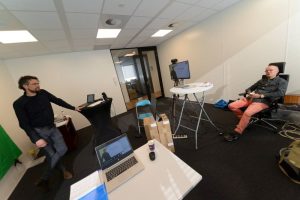
Hans Vermeulen (l) and Adrian Rankers are catching a breath during the break.
This article is written by René Raaijmakers, tech editor of High-Tech Systems.
Recommendation by former participants
By the end of the training participants are asked to fill out an evaluation form. To the question: 'Would you recommend this training to others?' they responded with a 8.9 out of 10.
